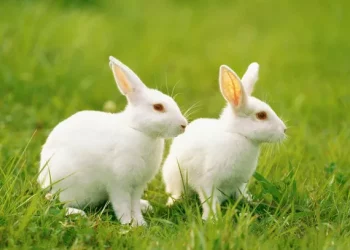Halfsider birds, also known as bilateral gynandromorphs, are among the rarest and most visually striking creatures in the avian world. These birds exhibit a unique and unusual coloration split right down the middle of their bodies, typically displaying male characteristics on one side and female on the other. This striking contrast creates an extraordinary appearance that draws attention from ornithologists and bird enthusiasts alike. Understanding what are the halfsider birds requires exploring genetics, avian biology, and anomalies in sex determination processes.
The Science Behind Gynandromorphism
Gynandromorphism is a rare phenomenon where an organism displays both male and female characteristics. In birds, this condition usually manifests as a clear bilateral division, resulting in one side of the bird showing typical male plumage while the other side exhibits female coloring. This is different from hermaphroditism, where both sex organs are present but not externally expressed in such a split manner. The occurrence of gynandromorphism is due to errors during the early cell division stages of embryonic development, leading to the expression of different sex chromosomes in different parts of the body.
How Halfsider Birds Are Formed
- Chromosomal Anomaly: Most birds have Z and W sex chromosomes, with males being ZZ and females being ZW. Halfsider birds typically arise when the egg’s cells do not properly segregate chromosomes during the first few divisions. This leads to half the body developing with ZZ chromosomes and the other half with ZW chromosomes.
- Embryonic Development: The asymmetric division results in half the embryo developing male traits and the other half developing female traits. This anomaly is set very early in development and remains throughout the bird’s life.
- Species Specificity: While this condition has been observed in several bird species, it is more easily identifiable in those with marked sexual dimorphism, such as cardinals, budgerigars, and chickens.
Characteristics of Halfsider Birds
- Coloration: The most obvious feature of halfsider birds is their coloration. For example, in species like the Northern Cardinal, the male half is bright red, while the female half is a more subdued brownish tone.
- Plumage Texture: In addition to color, the texture and type of feathers may differ. Male birds often have more elaborate feather structures.
- Behavioral Traits: While halfsiders may exhibit a mix of male and female behaviors, some display preferences that align more with one sex.
- Reproductive Capability: Most halfsiders are sterile due to the complexity of their mixed-sex anatomy, but some have been observed to function reproductively on one side of the body.
Notable Examples in Avian Species
- Northern Cardinal: Perhaps the most famous example, a halfsider Northern Cardinal with a perfect red-and-brown split has been widely documented in the wild.
- Zebra Finches: In captive settings, zebra finches have displayed this condition, providing opportunities for scientific study.
- Budgerigars: These popular pet birds sometimes show this phenomenon, often with a visible line dividing male blue from female brown or beige hues.
- Chickens: Poultry farmers occasionally report chickens that have one male-appearing side and one female-appearing side, often leading to confusion during sexing.
Scientific Significance
Halfsider birds are invaluable to scientific research, particularly in understanding sex determination and genetic expression in birds. They offer unique opportunities to study how different sets of sex chromosomes can control physical development on a cellular level. Researchers can observe how hormones and chromosomes interact to produce external traits and how this information might be applied in broader biological and genetic studies.
Challenges in Studying Halfsiders
- Rarity: These birds are extremely rare, making them difficult to study in natural settings.
- Captive Breeding: Because they are usually sterile, they cannot be bred for study, limiting research to naturally occurring cases.
- Ethical Considerations: Capturing and studying these birds raises ethical questions, especially when they are discovered in the wild.
- Short Observation Windows: Many sightings are anecdotal or fleeting, with few birds staying in one place long enough for extensive observation.
Public Fascination and Media Coverage
Halfsider birds frequently make headlines due to their eye-catching appearance. Social media posts and news stories featuring these birds often go viral, prompting interest from a wide audience beyond the scientific community. Their beauty and mystery captivate not only bird watchers but also artists, photographers, and animal lovers. These stories often help promote awareness of bird diversity and conservation efforts.
Differentiating Halfsiders from Other Anomalies
It’s important not to confuse halfsider birds with birds exhibiting piebaldism, leucism, or albinism:
- Piebaldism involves patches of unpigmented feathers.
- Leucism results in partial pigment loss but does not divide traits down the midline.
- Albinism results in the complete absence of melanin, leading to white feathers and red eyes.
Unlike these conditions, halfsider birds exhibit a clean, bilateral division of traits, making them uniquely identifiable.
Implications for Avian Evolution and Genetics
Studying halfsider birds can offer new insights into evolutionary biology and how genes are expressed in different environments. They provide real-world evidence of how physical traits are controlled and may even shed light on how evolutionary pressures maintain sexual dimorphism. Additionally, these birds help scientists question the binary classification of sex in animals and consider the spectrum of possibilities nature can produce.
Conservation and Ethical Concerns
While the phenomenon is fascinating, it raises important ethical and conservation questions. Removing a rare halfsider from the wild can deprive researchers and the public of further observations. On the other hand, keeping them in captivity can help scientists learn more. The balance between study and preservation must be carefully managed, with guidelines for ethical observation and data collection.
Tips for Birdwatchers
For birdwatchers hoping to spot a halfsider:
- Visit Habitats with High Biodiversity: Areas with many species and visible sexual dimorphism increase your chances.
- Use Binoculars or a Camera: A zoom lens can help you detect the bilateral division of coloration.
- Note Behavior: Observe courtship or feeding behaviors for clues about their mixed-sex traits.
- Report Sightings: Citizen science platforms like eBird are valuable for documenting rare occurrences.
Conclusion
Halfsider birds are one of nature’s most fascinating anomalies. From their striking appearance to their underlying biological makeup, they challenge our understanding of gender, genetics, and avian development. While they are rare and often difficult to study, their existence offers scientists and nature lovers alike a unique glimpse into the complexities of life. As interest grows and technology advances, we may uncover even more secrets hidden within these extraordinary creatures.
Related Topics:
























